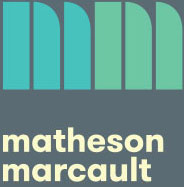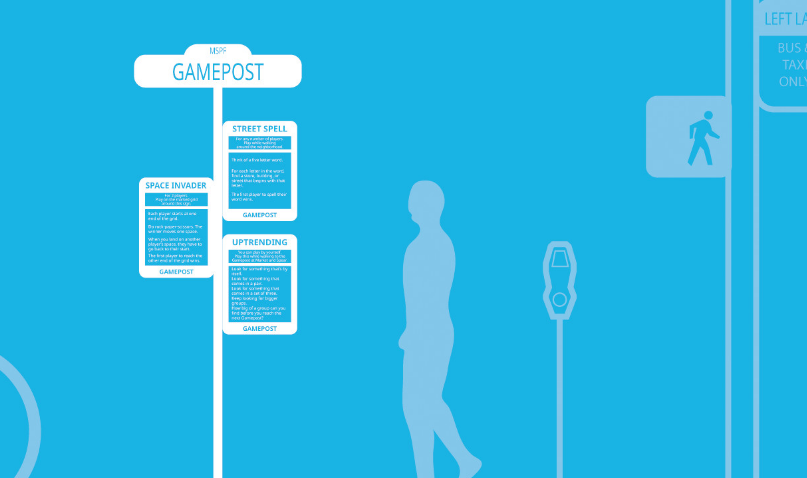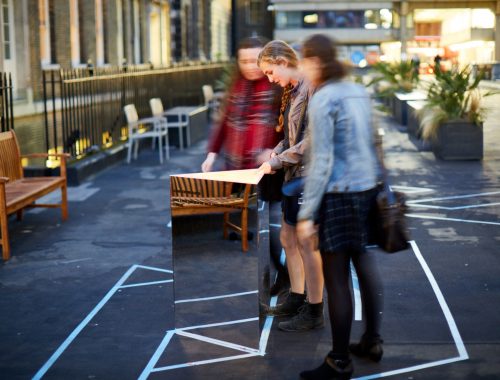Above: Gamepost by Josh Lee, due to appear at the Market Street Prototyping Festival in October.
This is July’s collection of interesting things going on in live games and embodied play – open calls, upcoming events, and interesting articles we’ve come across recently.
OPEN CALLS
Submissions are open for the Leftfield Collection, a curated show of interesting new work that sits within EGX at the NEC, Birmingham, 22nd – 25th September 2016. They say: “We’re also especially interested in accommodating custom hardware and unusual games (e.g. Tenya Wanya Teens, Glow Tag, and Line Wobbler are things we’ve shown before). If you have such a project, by all means submit.”
DESIGN AND MAKING
The GPS Museum isn’t new, but it’s new to me: a catalogue of “Location Based Games, Walking Documentary, Walking Cinema, Transmedia and Mobile Learning” broken into lots of different categories. If you fancy an overview of a load of different location-based smartphone games in one place, this is one of the most exhaustive I’ve seen.
This interview by Emily Short with paper engineer Robert Sabuda is really interesting on Sabuda’s “Mysterious Case” project (which he’s making with collaborators): a box that – according to their(according to their in-progress Indiegogo campaign – is “Part game, part book, and part interactive adventure, each Mysterious Case contains codes to crack, puzzles to solve, letters to snoop, boxes within boxes to unlock.”
REPORTING AND CRITICAL WRITING
Analog Game Studies Volume I (a book available as a free pdf) is a collection of essays on, well, analog game studies. This volume is very very heavy on LARP and role-playing generally, but they say they’re interested in “tabletop and live-action role-playing games, board games, card games, pervasive games, game-like performances, carnival games, experimental games, and more” so if this is your sort of thing perhaps worth keeping an eye on for the future volumes if roleplaying isn’t your thing.
Via Justin Pickard, a couple of slightly unexpected New York Times articles about locative games (Ingress and Pokemon Go).
This cultural history of football from Heritage Daily is great. “Why are there barred windows on the upper storeys of some of the old town walls of ancient English or Italian towns? Why would anyone take such expensive precautions at such vertiginous heights? The answer according to Wolfgang Behringer: ‘Football! People in the renaissance period were well aware of what a game of football could lead to and they wanted to protect their precious window glass from the hard balls.’”
GAMES
Playfinders – which launched last month – is a new attempt to collect and collate physical play from across the world, inviting people to submit their own physical games and cataloguing them by the nature of the game and the location in which it was played. Their focus is on playground games, but they’re very open to anything analogue. They’ve also written up their research trip to Brazil in a lot of detail.
This Guardian interview with artist Lilian Lijn is fascinating. The interview focuses partly on Power Game, “a casino-style word game she devised in 1974 at the Royal College of Art, as a response to Pinochet’s coup in Chile. Intended as a farce about power and dictatorship, it became a farce about democracy.” The design itself is simple and feels very contemporary: “Bets are placed; players argue, in a short sentence, for the power of a word they have chosen – “sky” against “black”, for example; and the remaining players vote for which word, or player, wins.” The wider presentation of this gameplay also sounds amazing – there was a recent run of the game at the Southbank Centre: “Descend to the basement and gather in a pop-up cafe bar where recordings of previous Power Games are projected on the walls. The bold can buy a single chip to enter the casino…”
Lijn’s past work also includes her recent Poemdrums and earlier Poem Machines: “In 1962 I letrasetted words onto the surface of cylinders and cones, then fixed them to motorized turntables, and made them spin at different speeds. I wanted the word to be seen in movement, dissolving into a pure vibration until it became the energy of sound.”
FESTIVALS AND CONFERENCES
The Chelmsford Fling Festival is tomorrow: a day-long festival with arts and crafts and silly games and carnival rides, only for adults.
San Francisco’s Market Street Prototyping Festival isn’t until October, but they’ve just announced their selected projects, and there’s a TON of interesting playful stuff there: the rotating seat of Bench-go-Round, signs proposing short games to play in Gamepost, tactile colourful sculpture Glimmer, miniature park The Play Station and a whole heap more.
There’s also an excellent overview of the prototypes from last year’s festival, looking both at the prototypes themselves and the process of planning through prototyping (via Sarah Brin).
EXHIBITIONS
The Gaite Lyrique in Paris has an exhibition running till 31 July: extra fantômes. “Haunted mirrors, invisible surveillance, living houses, occult cyborgs, spectral machines, intangible waves and virtual existence: la Gaîté lyrique’s new exhibition presents a selection of contemporary artworks about a variety of ghostly figures: the real, the fake and the uncertain.”
And Reflection, an exhibition of work by Jeppe Hein, is currently on show at the Kistefos Museum in Norway (until 9 October). Londoners might know Hein’s work best through Appearing Rooms, the square fountain that pops up on the Southbank most summers, but he’s made a whole heap of other installations relating to bodies in and reperception of public space. “By creating a space for both active play and mindful contemplation Jeppe Hein wants to sharpen our awareness of ourselves and our surroundings.”
MISCELLANEOUS
These blinkies from Lost My Name are lovely: little Youtube videos of big blinking eyes that you can put behind scrawled paper drawings to give them animated faces.
And this article goes into a lot of amazing detail about Niki de Saint Phalle’s shooting paintings (in which the artist put bags of coloured paint behind a plaster canvas and invited people to shoot at it to complete a painting – sometimes particular friends, sometimes just gallery guests). It also covers other works she made that explicitly invited participation from observers:
Another target-painting Saint Phalle made during this time was Saint Sébastien (Portrait of My Lover) (1961). […] the canvas is contained by a black wooden frame, the assemblage again forming an ostensible outline of a man’s body (complete with white shirt and tie being “stabbed” by rusty nails), and a black-and-white target located just above the collar (in place of a head), with splattered and stained Pollockian skeins of swirling, dripping paint covering the garment. Underneath the hanging assemblage sat a small table with darts, again explicitly encouraging gallery-goers to take up the task and throw them at the human form.




